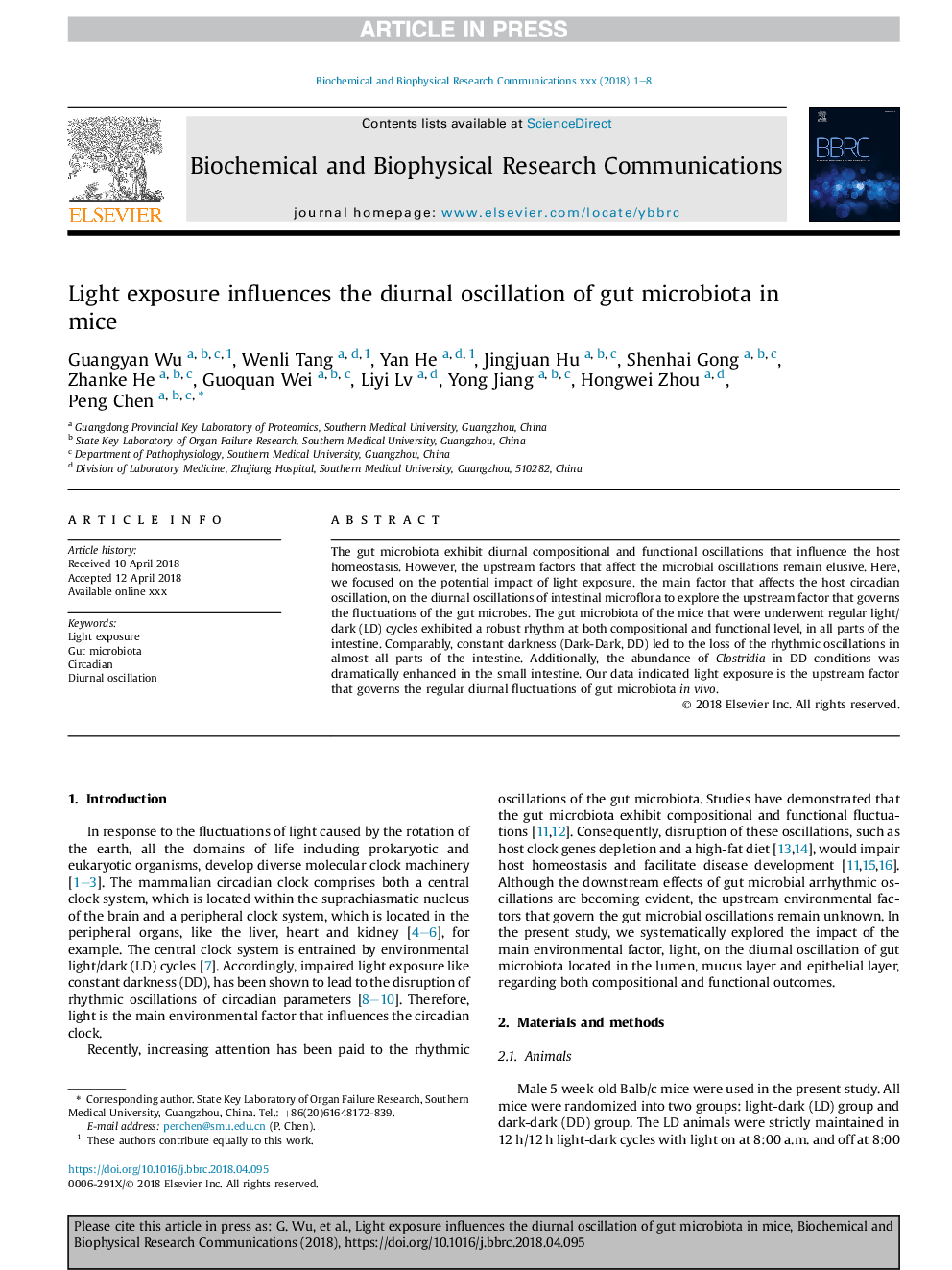| Article ID | Journal | Published Year | Pages | File Type |
|---|---|---|---|---|
| 8292597 | Biochemical and Biophysical Research Communications | 2018 | 8 Pages |
Abstract
The gut microbiota exhibit diurnal compositional and functional oscillations that influence the host homeostasis. However, the upstream factors that affect the microbial oscillations remain elusive. Here, we focused on the potential impact of light exposure, the main factor that affects the host circadian oscillation, on the diurnal oscillations of intestinal microflora to explore the upstream factor that governs the fluctuations of the gut microbes. The gut microbiota of the mice that were underwent regular light/dark (LD) cycles exhibited a robust rhythm at both compositional and functional level, in all parts of the intestine. Comparably, constant darkness (Dark-Dark, DD) led to the loss of the rhythmic oscillations in almost all parts of the intestine. Additionally, the abundance of Clostridia in DD conditions was dramatically enhanced in the small intestine. Our data indicated light exposure is the upstream factor that governs the regular diurnal fluctuations of gut microbiota in vivo.
Related Topics
Life Sciences
Biochemistry, Genetics and Molecular Biology
Biochemistry
Authors
Guangyan Wu, Wenli Tang, Yan He, Jingjuan Hu, Shenhai Gong, Zhanke He, Guoquan Wei, Liyi Lv, Yong Jiang, Hongwei Zhou, Peng Chen,
